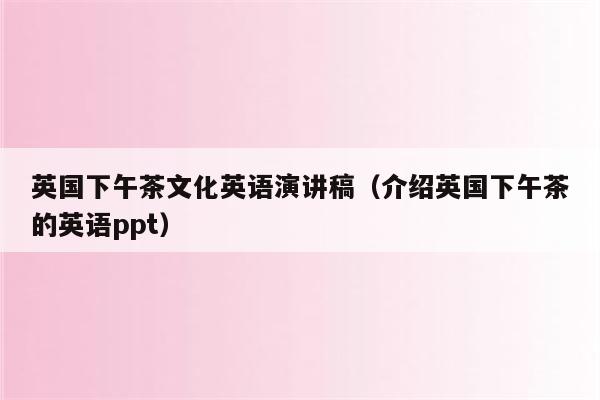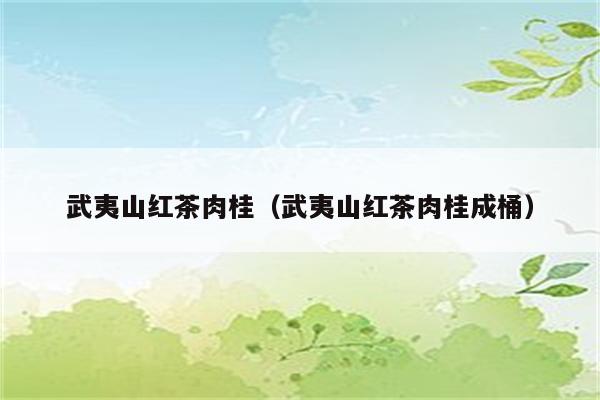本文目录一览:
急求一篇3分钟左右的高中英文演讲稿,主题关于英国饮食文化或者是介绍英式下午茶都可以,急求(#Д
English style of eating habits is also easy, pay attention to nutrition. Breakfast is usually porridge milk or a cup of red juice, coated with butter toast, fried bacon or sausage, eggs. At noon, the children eat lunch at school, adults at lunch on the job on the vicinity to buy a sandwich, a cup of coffee on, just kill. Only to the weekend, the British people will be rich on a table. Usually the main course is meat, such as grilled chicken, roast beef, fish and so on. A wide variety of vegetables, like cabbage, fresh peas, potatoes, carrots and so on. Vegetables in general are no longer processed, mounted on a tray, poured from the supermarket to buy ready-made sauce will be consumed. After the main course there will always be together digestible of sweets, such as cooking fruit, fruit pudding, cheese, ice cream and so on.
Fried fish and fries (Fish and chips)
This is the traditional British fast food nation (fast
food). It is in the 19th century 60's pop up. At that time, the railway put start fresh fish one night directly (direct) transported from the east coast to London. English at the fish paste on top ofgood deep-fried in oil, and fried potatoes be eaten together. People put a mixture of salt and vinegar sauce and pour it into the article on fish and potatoes, with a newspaper bag, and then eat from the paper in hand. Today, people often use a clean paper packaging, and to provide a fork (fork).
Cha (Tea)
British National enjoy a cup of tea. At the traditional British (tradition) on people with porcelain tea cup, one person a cup, a spoonful of tea. The majority of British people like to drink strong tea, but I want to add much milk. Many years ago, people used to put milk into the cup, then add the tea, and finally add water.
Coffee (Coffee)
Now in the United Kingdom, as popularity of coffee and tea. People either do not add milk or add milk, or drink coffee or preparing a new instant coffee.
Wine (Wine)
English wine industry is very strong. More and more of the many vineyards are producing wine and red wine (red
wine). English pubs everywhere, has several flavors, each with 10,000 large and small pubs, which have many hundreds of years of history, this old pub is usually haunted legends, it is interesting that not only did not care about the owner, but also his house ghost Li Chuan-story as the general put on a table in each. Something fishy about the pub business better and sell more expensive.
Eating habits with knife and fork pyronaridine ~
British people generally preferred way of cooking there is: cooked in soy and vinegar, barbecue, fried and fried. Of meat, seafood, game cooking methods are unique; However, the categories of the beef they have special preferences, such as barbecue beef (ROASTED BEEF), is attached not only in the consumption of seasonal vegetables, baked potato, but also will add some steak on the mustard sauce; at the use of seasoning on the butter and liquor preferences; at spice up the taste of meat Kou, cinnamon and other spices fresh.
The more well-known British cuisine has: beef kidney allocation (STEAK KIDNEY PIE), fish Pai (ENGLISH FISH CHIP), the Royal butter chicken (CHICKEN A LA KING) and so on. British people enjoy hunting, only once a year at the hunting period, there is much of the hotel or restaurant will be introduced to game meal, such as deer (VENISON), rabbits (HARE), pheasant (PHEASANT),, such as cooking. General cooking game when using some gin or berries and wine, this approach is in order to remove the smell of mutton flavor of the food itself.
Breakfast is very important to the British people, British restaurants in the supply of a wide range of meals, have fruit juice, fruit, eggs, meat, wheat porridge category, bread, jam and coffee. Nowadays the popular afternoon tea (HIGH TEA) is the mass from the United Kingdom, and its more famous there is Victoria-style VICTORIAN STYLE), the contents can be said to be all-inclusive, including all kinds of small points, muffin, fruit tarts (TARTE ) and sandwiches. Supper on the daily lives of English is also one of the most important part of the meal of their choice is usually late, and are eating betterto promote friendship between meals can imagine they belong to are very autonomous nation, and a supper for them could take hours.
The United Kingdom at the local, there will be lot of people who love to drink, mainly because it itself is also a wine producing country. English at the cost of alcohol consumption on the expenditure than the other also to the many.
Nobu Restaurant
This is a world-renowned Japanese-style sushi restaurant, perfect interpretation of the cultural diversity of London. Enjoy the best way is to let the staff recommend, another is called a reversal of the world's black cod, point of confusing the champagne glass. Of course, the best have someone else foot the bill! Remember the location you want in advance, otherwise.
St. John's Restaurant
Very authentic British restaurant, under the name of the solemn nostalgia,thick sauce, verytraditional British dishes. Pig here are LOGO, shows a simple kick! Have to roast whole pigs, Yorktraditional rural English dishes. Confections are a weight of more down 2,3个. Good to eat! Ensure that you spot, the United Kingdom must go FREE to try!
Hakkasan Restaurant
An average consumption of 60 pounds in London's top restaurants. Is not a false faceskill, newspapers comment on is "the history of the sexiest Chinese restaurant", are impartial appraisal. Hot and sour soup, pipa duck, pork Doo British sparkling wine, Greece white Portuguese. It seems that Chinese and Western, at tip of tongue on an.
中文:
英国人的饮食习惯亦式样简单,注重营养。早餐通常是麦片粥冲牛奶或一杯果汁,涂上黄油的烤面包片,熏咸肉或煎香肠、鸡蛋。中午,孩子们在学校吃午餐,大人的午餐就在工作地点附近买上一份三明治,就一杯咖啡,打发了事。只有到周末,英国人的饭桌上才会丰盛一番。通常主菜是肉类,如烤鸡肉、烤牛肉、烤鱼等。蔬菜品种繁多,像卷心菜、新鲜豌豆、土豆、胡萝卜等。蔬菜一般都不再加工,装在盘里,浇上从超市买回的现成调料便食用。主菜之后总有一道易消化的甜食,如烧煮水果、果料布丁、奶酪、冰激凌等。
鱼和油炸土豆条(Fish and chips)
这是英国民族传统的快餐食品(fast
food)。它是在19世纪60年代流行起来的。那时,铁路开始把新鲜的鱼一夜间直接(direct)从东海岸运到伦敦。英国人在鱼上面裹上糊放在油里炸好,和炸土豆条一起吃。人们把盐和醋的混合调料倒在炸鱼和土豆条上,用报纸包上,然后从纸包里拿着吃。如今,人们经常用清洁的纸包装,并提供一个餐叉(fork)。
茶(Tea)
英国民族喜欢喝茶。在英国传统(tradition)上人们用瓷茶杯泡茶,一人一个茶杯,一匙茶。大多数英国人喜欢喝浓茶,但是要加许多牛奶。多年前,人们习惯先把牛奶倒入茶杯,然后再放茶,最后加水。
咖啡(Coffee)
现在在英国,咖啡和茶一样受欢迎。人们或是加牛奶或是不加牛奶,或是喝新泡制的咖啡或速溶咖啡。
酒(Wine)
英国的酒业很强盛。越来越多的葡萄园正在生产白酒和红酒(red
wine)。英国的酒馆无所不在,有好几万家大大小小各具风味的酒馆,其中还有不乏数百年历史的,这样的老酒馆通常传说闹鬼,有趣的是,主人不但不避讳,还把他家的鬼故事像立传一般摆在每一张桌子上。有鬼的酒馆生意更好,而且卖得更贵。
饮食习惯用刀叉咯~
英国人一般较喜爱的烹饪方式有:烩、烧烤、煎和油炸。对肉类、海鲜、野味的烹调均有独到的方式;然而,他们对牛肉类方面又有特别的偏好,如烧烤牛肉(ROASTED BEEF),在食用时不仅附上时令的蔬菜、烤洋芋,还会在牛排上加上少许的芥茉酱;在佐料的使用上则喜好奶油及酒类;在香料上则喜好肉寇、肉桂等新鲜香料。
较为人知的英国料理菜名有:牛肉腰子派(STEAK KIDNEY PIE)、炸鱼排(ENGLISH FISH CHIP)、皇家奶油鸡(CHICKEN A LA KING)等。英国人喜欢狩猎,在一年只有一次的狩猎期中,就有许多的饭店或餐厅会推出野味大餐,如野鹿(VENISON)、野兔(HARE)、雉鸡(PHEASANT)、野山羊(WILDSHEEP)等的烹调。而一般烹调野味时,均采用些杜松子或浆果及酒,此做法是为了去除食物本身的膻腥味。
英国人对早餐非常讲究,英国餐馆中所供应的餐点种类繁多,有果汁、水果、蛋类、肉类、麦粥类、面包、果酱及咖啡等。 时下所流行的下午茶(HIGH TEA)也是传来自于英国,其较知名的有维多莉亚式VICTORIAN STYLE),内容可说是包罗万象,包括各式小点、松糕、水果挞(TARTE)及三明治等。 晚餐对英国人来说也是日常生活中最重要的一部份,他们选择的用餐时间通常较晚,而且都是边吃边喝边聊,以促进用餐人之间的情谊,可想见他们是属于极有自主性的民族,而一顿晚餐对他们来说可能要花上好几个钟头。
在英国当地,会有许多爱好喝的人士,主要是因为它本身也是个产酒国家。英国人在饮酒上的花费比起其它的支出还来的多。
Nobu餐厅
这是一家享誉全球的日式寿司餐厅,完美诠释了伦敦的多元文化。最好的享受方式就是让店员推荐,再多叫一份颠倒世界的黑鳕鱼,点一杯晕头转向的香槟。当然,最好还有别人买单!事前要记得定位啦,不然免谈。
圣约翰餐厅
很正宗的英国餐厅,顶着怀旧庄严的名字,汁浓酱稠、入味十分的传统英式菜。猪是这里的LOGO,透着一股纯朴劲儿!有转烤全猪、约克夏布丁等传统的英国乡村菜。甜点的分量更是一份打倒2、3个。 很好吃的!保证让你过瘾,有空去英国一定要尝一尝!
Hakkasan餐厅
一家平均消费60英镑的伦敦顶级中餐厅。绝不是死撑面子的假把式,报纸上的评论是“史上最性感的中餐厅”,是中肯的评价。酸辣汤、琵琶鸭、五花肉斗英国气泡酒、希腊白葡。似乎中西合璧,在舌尖上共谱一曲。
你可以摘选哦
下午茶英语短文急啊!!
下午茶!
no1:
Afternoon tea
Afternoon tea is a light meal typically eaten between 3pm and 5pm. It originated in the United Kingdom, though various places that used to be part of the former British Empire also have such a meal. However, changes in social customs and working hours mean that most Britons only take afternoon tea on special/formal occasions.
Traditionally, loose tea would be served in a teapot with milk and sugar. This would be accompanied by various sandwiches (customarily cucumber, egg and cress, fish paste, ham, and smoked salmon), scones (with butter, clotted cream and jam — see cream tea) and usually cakes and pastries (such as Battenberg, fruit cake or Victoria sponge). The food would be often served in a tiered stand.
While afternoon tea used to be an everyday event, nowadays it is more likely to be taken as a treat in a hotel, café, or tea shop, although many Britons still have a cup of tea and slice of cake or chocolate at teatime. Accordingly, many hotels now market a champagne cream tea.
--------------勤奋的分割线-------------
no2
Afternoon Tea
Tea is the steady companion of the Scottish day, and each hotel, no matter how humble, stocks its rooms with supplies for brew-ups: electric pot for boiling water, ceramic pot for brewing, china cups and small tea-creamers, a raft of teas, honey, fresh milk, and lemons. This is a delight and astonishment, for not only is there no such thing in American hotels, but room service even in respectable ones, when asked for tea with milk, can deliver a plastic jug of tepid water, this covered by a square of Saran Wrap, and a drinking glass of milk. To request tea in an American office is often to throw the receptionist into a swivet: he or she believes that there is tea somewhere in the corporate pantry, but where? One prefers not to ask rather than to send this person on a scavenger mission, especially because the tea, if found, is a grim bag-tea like Red Rose. Naturally, one might as well ask for a trip to Bombay as to ask for looseleaf Earl GREy, or first-flush Darjeeling, or Assam tips. Home is a fluid place; each day at four o'clock, I could easily be an expatriate.
One afternoon we are poking up the rocky coastline from Black Craig near Stromness north past Skara Brae to Brough Head; this western end of the island is folded and fissured in a steady cascade of bays, headlands, gloups, caves, and the handsome invasions of ocean into the land that are called geos. These places are named Lyre, Nebo, Axna, Saed, Sand, and Skipi, in a succession of sounds as quirky and original as the land. We wind slowly north toward Skipi Geo just around the Brough of Birsay, stopping to walk Marwick Head. The wide plateau at the summit of the cliff tilts at a precipitous angle toward the sea, covered with GREat, loose, cracked plates of flagstone in thin layers: orange, grey, ochraceous rocks that will weather into fertile soil or be pried up for roofing flags if they do not first slide into the sea. The bluff perpetually wet and glistening, and cold water pools dot the depressions and rectangular fissures in the rock. Over the exposed plateau, wind blows in steadily and coldly from the sea. This is the home of the largest and most spectacular seabird colony on Mainland; some thiry-five thousand guillemots, ten thousand kittiwakes, as well as fulmars and razorbills, who favor the eroded flagstone ledges for nesting and the abundance of shoaling fish for eating. But in this stormy weather, only a few guillemots -- auks, and clumsy on land -- bumble along the slabs of pitted rock cliff. For miles to the west, there is flat, grey, choppy ocean; for miles to the east, a grey, clouded sky under which low, treeless fields roll smoothly into the moors.
It is nearing four o'clock in the afternoon, and sure enough, parked just off the road, overlooking the pungent tidal flats, we come upon a small caravan camper with its aluminum door open to a late-middle-aged Scottish couple, sitting at a folding table, taking tea and biscuits. Passing by, one only has a glimpse: his thick, white socks and heavy black shoes; her plump pear form and print dress; the electric kettle on the table. The archaeologists are puzzled as to why the people of ancient Skara Brae would locate their huts so close to the sea, and have surmised that in fact the settlement was originally located in a protected hollow, that time has eroded the shoreline inland toward the huts. That would make sense. Indeed, when presented at Skara Brae with the lure of a sparkling sea and the howling wind, we ourselves tucked into the hollow of a dune for lunch, eating cheese and apples in the sun with wind skimming our heads, blowing the sand into rippling ridges, flattening the beach grasses. Probably the archaeologists are right, but this utterly typical sense of Scottish domesticity blithely planted at the edge of harsh cliffs, afternoon tea conducted in the wind and cold, suggests another possibility.
-----------耕耘的分割线----------------------
no3
Afternoon Tea Good for the Health of White-collar Women
For white collars, too little lunch or too much work often causes their stomachs to make noises, signifying they're hungry. At this time, if they have afternoon tea on time with balanced nutrients, it would not only drive away the sleepiness, but also help in creating a "perfect" body.
A test shows that people who have the habit of taking afternoon tea are better than those who don't by 15 to 20 percent on average in terms of memory and responsive ability. Some people in the west have afternoon tea most days because they believe it makes people feel refreshed, improves mental attention, relieves fatigue, and promotes work efficiency.
According to He Jiguo, associate professor of the College of Food Science, China Agricultural University, an extra meal at around four o'clock helps people sustain their energy until dawn. Moreover, it cultivates people's habit to have less food for supper, which is considered good for people's health.
Afternoon tea is different from snacks. The calories from snacks will be stored in the body. However, like other regular meals, a lot of calories from afternoon tea are consumed by the body. Select 2 to 3 foods that are supplementary to each other and you can guarantee the balance of nutrients. For example, a kind of grain food (biscuit or bread sticks), together with a portion of dairy food (sour milk or bean milk), or a fruit as well as water or tea will be fine to the body.
Other than this, British scientists also discovered that afternoon tea is beneficial to reduce blood fat. Cholesterol level is not only influenced by food, but also dietary frequency. Researchers pointed out, if three meals a day are divided into four or five meals or even six, it is even better to lower the cholesterol level.
(Source: rayli.com.cn, translated by )
我爱英文

英国人的下午茶 中英文对照
从饮茶文化的发源来讲,最早于下午喝茶的民族,理应是一向以 茶文化着称的古代中国。然而随着时代的发展,将下午茶发展为一种既定习俗的文化方式,则是英国人。 一种流行的传说认为,在1840年一位英国 上流社会的女士:贝德芙公爵夫人安娜女士,在下午时分因百无聊赖,让女仆准备了少量的烤面包片、奶油 和红茶 。这种简便的饮食方式很快就成为了英国贵族们打发下午时光的一种绝佳方式。 然而下午茶的发展也受到了当地文化的影响,在以严谨礼仪要求着称的英国,下午茶逐渐产生了各式各样的礼节要求与习惯。 并成为英国上流社会中每日必不可少的社交环节之一。 From the tea culture of origin is concerned, the first afternoon tea at national , should be always to tea culture , known in ancient China . However, with the development of the times, will be developed into an established custom of afternoon tea culture, then it is English. A popular legend that in 1840 a British high society lady: Beide Fu Duchess Anna, in the afternoon due to boredom, so the maid to prepare a small amount of toast , butter and tea . This easy way of eating quickly became a British aristocrat who sent a great way to afternoon time. However, the development of afternoon tea by the local culture, in the strict etiquette demands known to the British, tea etiquette gradually produced a wide variety of requirements and habits. British high society and become an essential social element of the daily. 英国人喝下午茶的方式丰俭由人,由高贵的正式茶聚( tea party ),到可以不喝茶只吃点心的餐饮( high tea ),都可以称为下午茶。 随着时代发展,英国妇女逐渐拥有自己的事业,部分人视传统的下午茶为过时的习俗,因此现在不是所有英国人到了下午三四点就一定会喝下午茶。 时下的英式下午茶一般在下午三点半到四点半进行。 英式下午茶的专用红茶为产自英属殖民地 印度 的 大吉岭红茶 与 伯爵茶 、或 锡兰高地红茶 。 除此之外英国也有在下午茶时喝奶茶的习惯。 随茶而来的还有切成薄片的 柠檬 及奶罐。 随着时间的推移,一些在早期上不得台面的加味茶也逐渐被人们所接受,这令下午茶在普通民众中流传更为广泛。 然而喝茶并不是主要的环节,品尝 蛋糕 、三明治 等各种点心,反而成了最重要的部分。正式的下午茶点心一般被垒成“三层架”的形式:第一层放置各种口味的 三明治 ( tea sandwich ),第二层是英国的传统点心 司康饼 ( scone ),第三层则是小蛋糕和水果 塔。 这个三层架点心应先从下往上吃。 除了这种必不可少的三层点心,一些牛角面包 、葡萄干 、鱼子酱 等食品也会被摆上来,来迎合宾客的口味。
英式下午茶的英文介绍
这是简介,还有很多细节介绍,在参考资料链接里。
Afternoon Tea is the service that comes to mind when we think of a sophisticated British tea. It’s the elegant repast served at 4 or 5 pm, consisting of tea with scones, small sandwiches, cakes and other pastries.
A Cream Tea means that clotted cream is served as well. Clotted cream, also called Devonshire cream, is a thick cream made by heating milk until a layer of cream forms on its surface that is then cooled and skimmed off.
Afternoon tea was "invented" by Anna, Duchess of Bedford (1783 – 1857), wife of the 7th Duke, in 1840 as "a way to quell the inevitable hunger pangs between lunch and dinner". In other words, she “got too hungry for dinner at eight…”!
In the 19th century large meaty breakfasts were common and luncheon was a light sort of picnic with no servants present. Dinner was not served until 8 pm, so it is perfectly understandable that the duchess got a little hungry in the late afternoon.
Traditionally, a formal afternoon tea is performed according to certain rules of etiquette. At intimate gatherings the tea server (usually the hostess) pours the tea while seated with her guests.
The server first asks "Sugar?”, then “one lump or two?". The sugar, if requested, is placed in the cup using specially designed sugar tongs.
Then she asks, "Milk, or lemon?"
Milk and lemon should not be used together since lemon curdles the milk. Fresh milk is the best choice for Indian or African teas, and lemon for Ceylon or China teas.
The milk is poured before the tea.
(But see Tea Trivia below!!)
For the lemon-takers, a plate garnished with thinly sliced lemons is offered with a small fork. Most British think that the addition of lemon is pretentious/affected!
After handing the cup to the guest, hot water is offered for those who like their tea weaker.
Once everyone is served tea, the guests select traditional tea fare from the table or a tiered cake stand. The goodies can include crumpets slathered with butter, tea breads with fresh and dried fruits, dainty well-trimmed tea sandwiches, tall stand cakes, flaky scones, tart jams, lemon curds, small cookies, etc. Each guest takes a napkin, a small plate, and a butter knife for spreading jam, cream or sweet butter.
It takes some practice to balance a full cup, saucer, plate piled high with cakes and sandwiches, knife and napkin, but dropping crumbs and spilling tea are initiation rites and part of the enjoyment of the ceremony.
For Hotel restaurant or Tea Room service, wait staff serve customers at individual tables.









